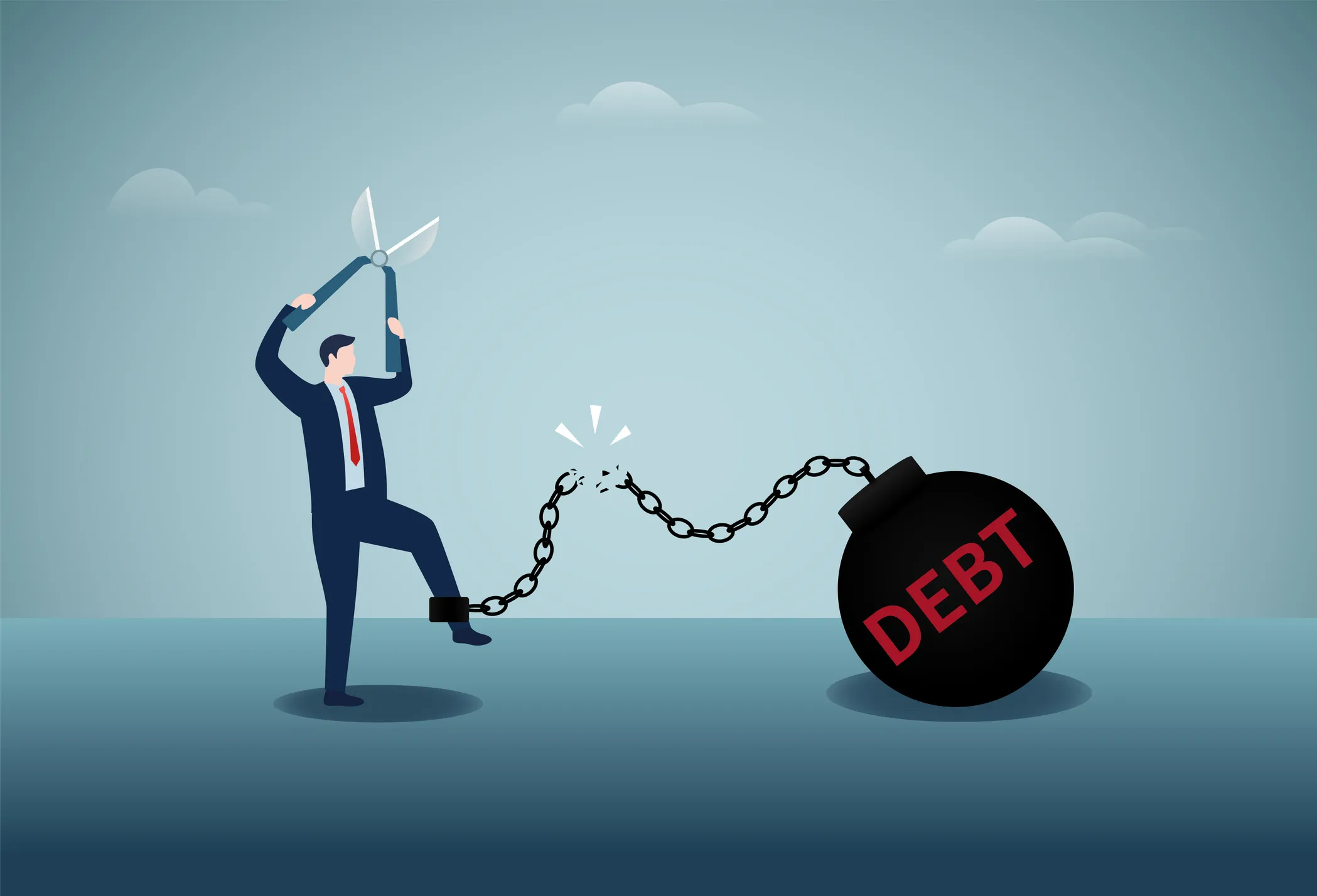Declaring bankruptcy is a serious decision that shouldn’t be taken lightly. Fortunately, declaring bankruptcy is only one way to get out from under insurmountable debt. A debt relief order is a simpler, cheaper alternative to consider.
Debt relief orders are a way for those with a relatively small amount of debt and few assets to get debt written off. You can learn more about the eligibility requirements, pros, cons, and alternatives.
What’s a Debt Relief Order?
A debt relief order (DRO) is a legal process that can help people clear their debts without declaring bankruptcy. It’s available in England and Wales to those with £30,000 or less in debt and those in Northern Ireland with £20,000 or less in debt.1 If you’re experiencing financial hardship and unable to pay off your debt, then it may be a solution.
 zhuweiyi49/Getty
zhuweiyi49/GettyThose granted a DRO get a 12-month debt moratorium. As a result, they don’t have to pay certain kinds of debt during that time. When the moratorium ends, the debts included in the DRO will be written off unless your circumstances have improved. For example, the DRO may be revoked if you get a pay raise that now makes it possible for you to repay the debts.
Who’s Eligible for a Debt Relief Order?
Beyond the maximum amount of debt allowed, there are additional eligibility requirements to meet. For instance, you need to demonstrate that you’re experiencing financial hardship and can’t afford to repay your debts.
That means you have less than £75 left after paying household expenses, taxes, and national insurance every month if you’re in England or Wales.2 And those in Northern Ireland must show they have less than £50 disposable income each month.3
Unfortunately, you’re ineligible if you own valuable assets like a home or you’ve had a DRO in the last six years. Additionally, you need to have lived or worked in England, Wales, or Northern Ireland in the last three years.
The Pros and Cons of Debt Relief Orders
If you’re considering a debt relief order as an option to get out of debt, then it’s important to weigh the pros and cons carefully and understand the details of the process. With this in mind, let’s explore some of the pros and cons.
Pros of Debt Relief Orders:
- Your debts may get written off after the DRO period
- You don’t have to repay certain debts during the period
- Creditors can’t send debt collectors during the period
- DROs are cheaper than other formal debt solutions4
Cons of Debt Relief Orders:
- DROs negatively affect your credit score
- DROs appear on your credit file for six years
- Certain debts are excluded from DROs
- Some jobs don’t allow you to be insolvent5
How To Apply for a Debt Relief Order
Now that you have a better grasp of debt relief orders, you might be wondering how the application process works. Before applying, the first thing to do is read up on the ins and outs of the solution. After doing your research, reach out to an authorized debt adviser.
Your debt adviser can help determine whether you’re eligible for a DRO. They can also help you weigh the pros and cons. Once you decide to proceed, your debt adviser will help you complete the application and submit it for you. Keep in mind a £90 official receiver’s fee must be paid when you apply.
The official receiver then assesses your application. Decisions are typically made within 10 business days. If your DRO is approved, then the official receiver will tell your creditors that they can’t demand repayment during the period. Be sure to alert the official receiver if your financial situation improves at any time.
Alternatives to Debt Relief Orders
A debt relief order might be a good fit if you’re struggling with debt, but it isn’t the only option. Bankruptcy, for example, is another option for clearing debts. However, it’s generally considered a last resort because it can have long-term consequences.
Other alternatives include individual voluntary arrangements, administrative orders, and debt management plans. Before proceeding with a debt solution, do your research to make sure you understand how each one works and talk with a debt advisor.
Finally, you may have noticed that debt relief orders are only available in England, Wales, and Northern Ireland. If you live or work in Scotland, then a minimal asset process bankruptcy is a similar solution to look into for your debt relief needs.
Things To Keep in Mind
Debt relief orders offer a way for those in England, Wales, and Northern Ireland to clear debts without declaring bankruptcy. If you’re struggling to manage mounting debt and want to explore your options, then a debt relief order may be worth considering.
Keep in mind there are pros and cons to debt relief orders, so it’s important to thoroughly research your options and seek professional advice before moving forward. A debt relief order can clear debts and provide some much-needed financial breathing room, but it may not be suitable for everyone.